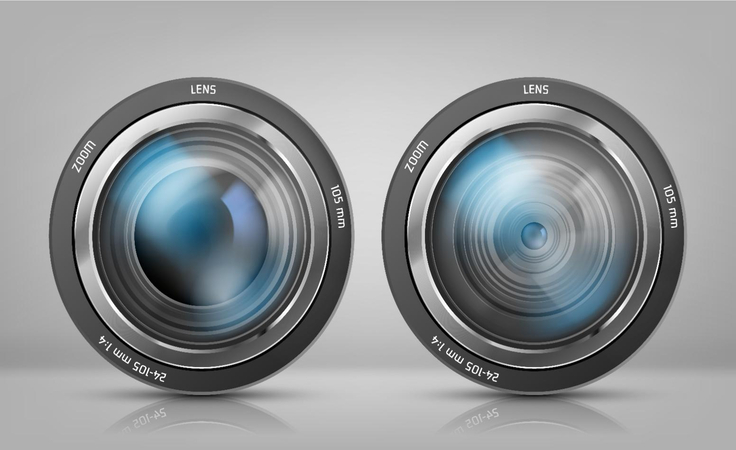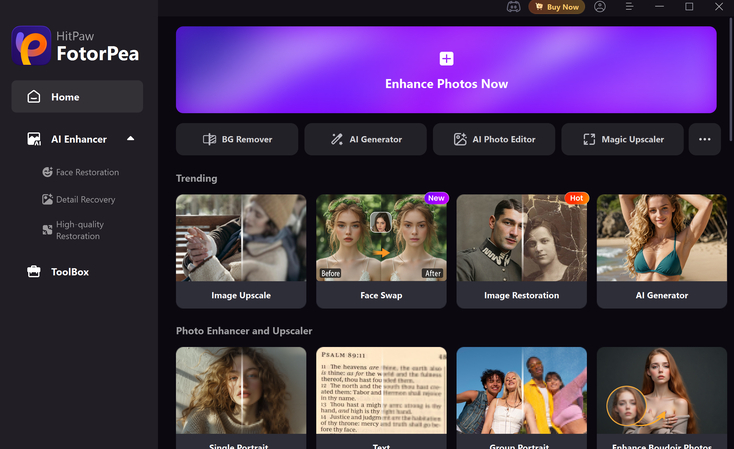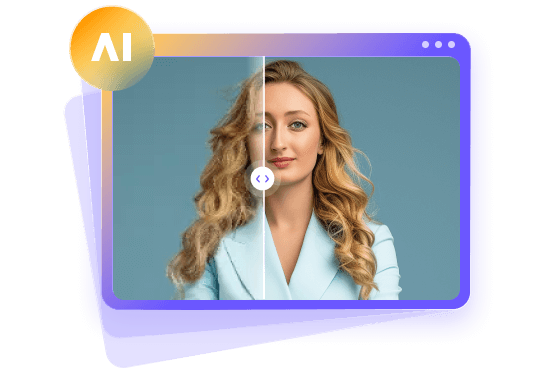Fisheye Lens Photography Explained for Creatives and Beginners
Dive into the distorted, dynamic world of fisheye photography-where straight lines bend, perspectives warp, and ordinary scenes transform into eye-catching art. Perfect for creatives and beginners, this ultra-wide-angle lens turns landscapes, architecture, and action shots into immersive, surreal visuals.
Whether you're shooting skateboarding tricks, sweeping cityscapes, or abstract portraits, a fisheye lens unlocks bold, boundary-pushing creativity. Ready to experiment? Let's go!
1. What Is Fisheye Lens Photography?
Let's start with the basics: what is fisheye lens photography? This is a very special genre and special lenses are used (ultra-wide-angle), providing a panoramic, hemispheric view, sometimes extending to even 180 degrees.
Unlike standard wide-angle lenses, fisheye lenses dramatically curve straight lines, creating a distorted, artistic effect.The end product is the misshapen yet attention-seeking picture that is dynamic and absorbing.
Fisheye is named such because it has a distorted view at the edges and a field of vision like that of how a fish would see. The shape of the lens will magnify distance and perspective, which will usually make the middle of the image seem nearer and the outer part stretched out.
It is applied in action sports, landscape, architectural, and abstract or artistic photography. You can make any subject eye-catching with the help of deliberate framing and techniques. Whether you're just exploring photography or looking to expand your portfolio, mastering fisheye lens photography techniques opens the door to expressive, boundary-breaking shots.
2. Types of Fisheye Lenses and Their Applications
When diving into how to use a fisheye lens, understanding the two major types of fisheye lenses is essential: circular and full-frame.
Circular vs Full-Frame Fisheye Lenses

Circular fisheyes have a complete 180 field of view, and give a circular image at the center of the frame, with corners blacked out. They are perfect for any artistic shots, experimental work, or technical topics such as astronomy.

The full-frame fisheye lenses, on the other hand, cover the entire image sensor. Although they still have a lot of distortion, the picture is printed to fill the whole frame without the dark sides. These lenses would be more applicable in general creative photography and such like landscapes, interiors, and events. If you're exploring fisheye lenses for creative photography, full-frame lenses offer the perfect balance between visual drama and usability.
3. Enhance Fisheye Lens Photos with HitPaw FotorPea
In-camera shots lay the foundation, but post-processing transforms fisheye photos into polished, professional visuals-removing distractions and enhancing their unique perspective.
For perfecting fisheye photography, HitPaw FotorPea stands out with AI-powered precision:
- Balances distortion control - Maintains the iconic fisheye curvature while reducing unwanted edge warping.
- Enhances fine details - Sharpens textures without over-processing for natural clarity.
- Optimizes lighting & color - Corrects imbalances while preserving the scene's mood.
Ideal for fixing color casts or refining compositions, this tool simplifies complex edits for wide-angle shots. With intuitive controls, HitPaw FotorPea helps you achieve pro-level results efficiently-ensuring your fisheye images captivate with both creativity and technical excellence.

4. Popular Focal Lengths and Viewing Angles
The most important considerations with regard to the fisher eye lens are focal length and angle of view. In fisheyes, most lenses in this category range between 8mm and 16mm, depending on the sensor size (full-frame or crop). The shorter the focal length is, the larger the angle is, and the more severe the distortion.
- 8mm lenses generally provide a full 180° circular image.
- 10mm to 12mm lenses offer wide coverage and are popular among crop sensor cameras.
- 15mm to 16mm fisheye lenses are great for full-frame DSLRs, giving a firm but more controlled fisheye effect.
By understanding these technical differences, you'll know how to use a fisheye lens to suit your creative intent, whether it's bold experimentation or practical wide-angle coverage.
5. When and Why to Use a Fisheye Lens
A fisheye lens is not all about distortion; it is also a method of storytelling. Being familiar with the application of a fisheye lens at the right time and feeling can take your work to a different level, making it breathtaking.
- You want to enhance the drama of expansive landscapes.
- Shooting architecture where you want to highlight symmetry and curvature.
- Capturing concerts, events, or action sports where proximity and energy matter.
- Creating artistic portraits that break away from conventional framing.
- Designing virtual tours or immersive social media visuals.
In both of these environments, the lens enhances emotion, exaggeration, and mood in the frame. It can also be applied to make small spaces vaster or to create a whimsical and surreal effect.
However, outside of functionality, it is a means of self-communication. For creatives who want to push the envelope, a fisheye lens for creative photography allows you to build images that surprise and intrigue viewers. When carefully employed, this lens can bless with a feeling of awe, a laugh, or the feeling of nostalgia, or perhaps all three.
6. Tips and Techniques for Stunning Fisheye Shots
Mastering fisheye lens photography techniques means learning to work with the distortion, not against it.
Composition Tips to Avoid Chaos
Fisheye shots quickly overtake good composition. The following is a plan to take care of visual control:
- Center your subject to reduce distortion and keep attention focused.
- Use symmetry to balance out curved lines.
- Incorporate leading lines like roads, hallways, or trees that guide the eye through the curvature.
- Avoid cluttered backgrounds - too many elements can compete and become confusing in a distorted frame.
It is also prudent to shoot with purpose. Ask yourself how the fisheye contributes to the narrative of the image, instead of snapping everything that you see.
7. Best Settings for Fisheye Shots

Choosing the best settings for fisheye lens photos depends on your lighting and movement, but here are universal tips:
- Aperture: Stick to f/8-f/11 for maximum sharpness and depth.
- ISO: Keep it low to avoid grain - fisheye lenses often require high image quality due to their sharp edges.
- Shutter Speed: Go faster (1/200-1/500) if capturing movement, slower if static.
- Manual Focus: Many fisheye lenses are manual - use hyperfocal distance to keep the whole scene in focus.
Good composition can turn warped images into awe-inspiring pieces, together with proper settings.
8. Common Mistakes to Avoid with Fisheye Photography
Even the skilled photographer is likely to fall off guard with a fisheye lens. The following are some of the mistakes to avoid:
- Excessive consumption of the fisheye effect: The popularity is not to consume it everywhere; otherwise, the effect will lose its magic.
- Neglecting horizon lines: Oblique horizons are an easy way to distract a viewer, unless the skew is a part of the composition.
- Being too close to your subject: The closer you are, the more you exaggerate, the faces or the objects work out unrecognizable.
- Dense composition: It is so thick that the view turns into confusion, particularly in a curved frame.
- Forgetting to edit: frequently, fresh-out-of-the-camera fisheyes require post-processing. Failure to do so will result in flat or overexposed images.
When the style and quality have to be retained, combine your creative instinct with adequate framing and post-editing. That's where tools like HitPaw FotorPea can help polish even flawed images into eye-catching final results.
9. Fisheye Lens Photography FAQs
Fisheye lenses distort straight lines dramatically, whereas wide-angle lenses are intended to leave lines straight and unrestricted. Fisheyes are used to have an artistic or creative look.
Traditional portraits are usually not distorted because of facial distortion. Nevertheless, they place an extra touch on fun, surrealistic, or experimental portraits.
Yes, they can be corrected partially. Tools like HitPaw FotorPea allow you to reduce distortion, adjust light, and bring out details for a more polished or normalized look.
It fixes the barrel distortion, enhances sharpness, lighting, and color in fisheye shots. It's also an excellent photo enhancer for wide-angle photography, making editing easy and results consistent.
Final Thoughts
Creative fishing-lens Take a playful approach to the visual narrative by using a special lens: fisheye lens photography. Whether it is architecture, adventure, or art, the lens has dynamic views that jump-start the imagination.
Learn how to use a fisheye lens, plan your shots carefully, and use innovative editing tools to bring your images to life. With features that help correct distortion, refine clarity, and boost color, HitPaw FotorPea is the ideal companion for anyone looking to push the limits of creative photography and produce stunning, professional-quality results.
Leave a Comment
Create your review for HitPaw articles









